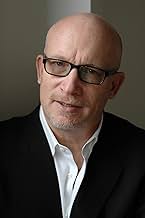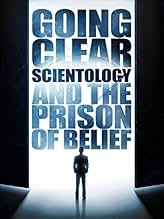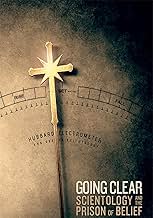Going Clear: Scientology & the Prison of Belief
A documentary looking at the inner-workings of the Church of Scientology.A documentary looking at the inner-workings of the Church of Scientology.A documentary looking at the inner-workings of the Church of Scientology.
- Won 3 Primetime Emmys
- 7 wins & 32 nominations total
- Self
- (archive footage)
- Self
- (archive footage)
- Self
- (archive footage)
- Self
- (archive footage)
- Self
- (archive footage)
- Self
- (archive footage)
- Self
- (as Hana Eltringham Whitfield)
- Self
- (as Sarge Pfauth)
- Director
- Writers
- All cast & crew
- Production, box office & more at IMDbPro
Storyline
Did you know
- TriviaSheila Nevins, HBO's president of documentaries, said "probably 160 lawyers" worked with them on the film to avoid litigation from the Church of Scientology.
- Goofs(at around 8 mins) When Paul Haggis is discussing his beginnings with the church, a clip is shown claiming to be "London, Ontario." What is actually shown is a view of downtown Hamilton, Ontario, looking east from King Street and James Street. The bus clearly reads "West Hamilton". Also visible: Woolworth's, the Wright House, and Gore Park - downtown Hamilton landmarks.
- Quotes
Paul Haggis: I finally get to OT 3 and they give me the secret materials, which I've been hearing about all this time. They're hand written by Hubbard. You'd have to keep them in a locked briefcase, be very cautious because they would always say if this gets out it's dangerous to people. It can actually do them harm if they are not adequately prepared. And I read it and it doesn't make any sense... I think, I remember for one fleeting second thinking well maybe it's an insanity test. Maybe if we believe this they kick you out. You know? Maybe you're insane! That of course is not the case. They talk about, you know, the fact that the earth was created, that such and such of trillions of years ago and this guy, who's this space guy... and put them in volcanoes and then blow them up with A-bombs... And we have these lost souls all over us and we have to get rid of them. And I'm going what the fuck are you talking about? I mean, I'm down for the self-help stuff. I'm down for, ok, I can be clear, I can, you know, I can get rid of those, the negative emotions, but what the fuck is this?
- SoundtracksJust Dropped In (To See What Condition My Condition Was In)
Written by Mickey Newbury
Performed by The First Edition
Courtesy of San Juan Music Group, LTD.
Going Clear is divided into three specific acts: the first concerns high-profile celebrities who were once a member of the Church of Scientology before leaving, such as Spanky Taylor, Paul Haggis (director of 2004's Crash), and Jason Beghe, the second concerns L. Ron Hubbard's life and how the publication of his bestselling book Dianetics led to the creation of Scientology, and the third act shows the church's notorious allegations for abuse, harassment, and misconduct, most of which perpetuated by its current Chairman David Miscavige.
This structure, and Gibney's liberal two hour runtime, allow for the church to be explored not only in a sense that adheres to and respects chronology, but allows for surmounting tension to build from a pacing standpoint. By the time the hour mark rolled around, I was completely immersed in this story, going from knowing relatively nothing about the church, remaining blissfully ignorant, to becoming hungry for more information. A great deal of this lies on Gibney's structure and depth of research, all of which churns up confirmation through news articles, fact checks, and testimonies from primary sources, but another portion is thanks to his presentation, which is reliant on suspense and gradual tension in a way that makes the documentary interesting rather than manipulative.
The interviews with former church members also do an exceptional job at detailing the church's different levels of involvement in Scientology, as well as their methods, demystifying what we've heard in the past and cutting through lingo to give us digestible information. For example, we learn that Scientology is rooted in condemnation of war, insanity, and criminality, imagining a world where everyone is a like-minded, mentally capable individual that can't be compelled to carry out such senseless violence. There are people known as auditors, who help people allegedly detect the mass of their own thoughts (something science has yet to prove) and have them discharge their emotions to make them in a complex state of human realization. Auditors use devices known as "E-meters" to help achieve such grandiose ideas, working with a machine that's part lie detector in the way a small needle glides through a scale of numbers, again, allegedly detecting brain activity and thought mass.
The more Gibney paints Scientology, and the more ex-church executives, members, and officials discuss it, it all seems as if Scientology is unproven "pseudo-science" that operates with cult-like devotion in the way it sucks people, particularly the lost and the wayward, in young, works to make them see that they have a purpose, and fighting to keep them loyal to the church at every cost if they dare try and leave. Other interesting elements of the film come in the detailing of Hubbard's life, as we hear from accounts of his wife that he was emotionally abusive towards her, as well as money-hungry, essentially creating a religion to gain an income and not be burdened by governmental tactics. These documented pieces of fact are enough to turn any potential Scientologist away from the church and never look back.
But why, Gibney asks, do celebrities like John Travolta and Tom Cruise, as well as hundreds of thousands of other individuals willingly flock to read Hubbard's teachings and hear Miscavige's fiery sermons if all these ideas circumvent into unsubstantiated assertions and the religion's creator has enough dirt on him to be labeled a phony? Again, it all comes back to the idea of man seeking a purpose in his life, which Gibney bravely articulates. We hear people like Beghe, Taylor, and Haggis talk about how all they wanted when they were young was a sense of life that the world had yet to provide them, and took pride in Scientology's teachings of such complex, human ideas that were foreign to them. It wasn't until they witnessed numerous acts of abuse and cruel manipulation for themselves that they made the decision to leave the church, many of them still being harassed by Miscavige's watchdogs to this very day.
The final main idea of Going Clear: Scientology and the Prison of Belief I have yet to present is the one proposed from its title. The concept of "going clear" in Scientology refers to the alleged erasing of one's conscious, which, in a Freudian context, where Scientology seems to get a lot of its ideas, means erasing all traumatic events, suppressed memories, and crippling thoughts from one's head. This state of "clearness" allows for a person to function unburdened by past experiences and look forward positively in a new way unheard of prior to being introduced to concepts of Scientology. If this was the weirdest idea spoken about in Going Clear, it would still be a documentary well worth seeing, but the fact that it digs well beyond the surface and explores the subject with an unforeseen level of depth makes it a truly fantastic piece of documentary filmmaking from one of the finest living documentarians today.
- StevePulaski
- Apr 1, 2015
- Permalink
- How long is Going Clear: Scientology & the Prison of Belief?Powered by Alexa
Details
Box office
- Gross worldwide
- $230,194
- Runtime1 hour 59 minutes
- Color
- Aspect ratio
- 1.78 : 1
Contribute to this page





























